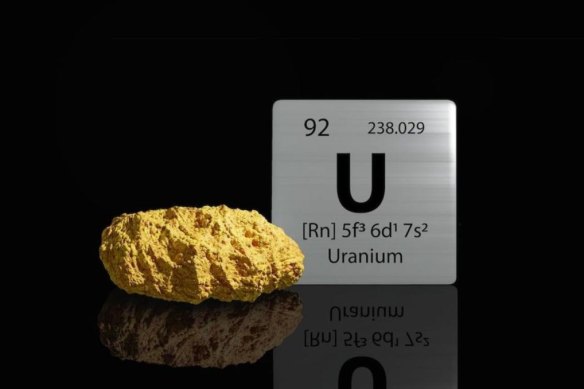
Rock chip assay results from Lincoln Minerals’ Eridani uranium project on South Australia’s Eyre Peninsula have backed up earlier portable x-ray fluorescence (pXRF) findings and confirmed significant amounts of carnotite uranium mineralisation.
Rock chip samples collected during the initial ground reconnaissance in August revealed uranium concentrations as high as 423 part per million (ppm) with readings from additional samples ranging between 274ppm and 278ppm.

The assays for rock chips at Lincoln Minerals’ Eridani uranium project on South Australia’s Eyre Peninsula have confirmed significant amounts of carnotite uranium mineralisation.
Notably, the high-grade results appear to have centred on the talc-bearing zones, compared to other rocks at site, providing a pathway for the company to refine its exploration plans, trace the source of the carnotite mineralisation and pinpoint future drilling targets.
The Eridani Project, centred on the historic Minbrie West quarry, was originally mined for marble, talc and asbestos but was closed in 1944 after uranium-bearing mineral carnotite was discovered. The finding ultimately led to the site exclusion from mining due to its elevated radioactive content.
A report from 1952 by the South Australia Department of Mines described a visit to the site in August 1950, after an initial inspection in 1949. During the visit, a shallow trench containing carnotite-stained marble was dug deeper, uncovering more carnotite on the cracked surfaces of the rock. Additional carnotite was also found in the quarry’s northeastern corner. After these discoveries, all mining of marble and talc at the site was stopped and the area has been abandoned since then.
The Eridani Project mainly covers agricultural land with an established Native Title access agreement with the Barngarla Aboriginal Corporation.
The company plans to move onto the next stage of exploration in December involving detailed sampling along fault structures, which could indicate uranium “hotspots” where faults intersect or exhibit signs of geological alteration.
The main goal of the new program will be to map out the full extent of carnotite mineral using detailed geological mapping to track the extent of the carnotite-bearing rock layers. Sampling will involve collecting rock chips and using channel sampling, along with handheld XRF devices and scintillometers for on-site analysis
The area has a complex structure, with several faults running northwest which cut through the Kalinjala shear zone. The faults then allowed fluids from nearby weathered Hiltaba suite granites to move through the rock.



























